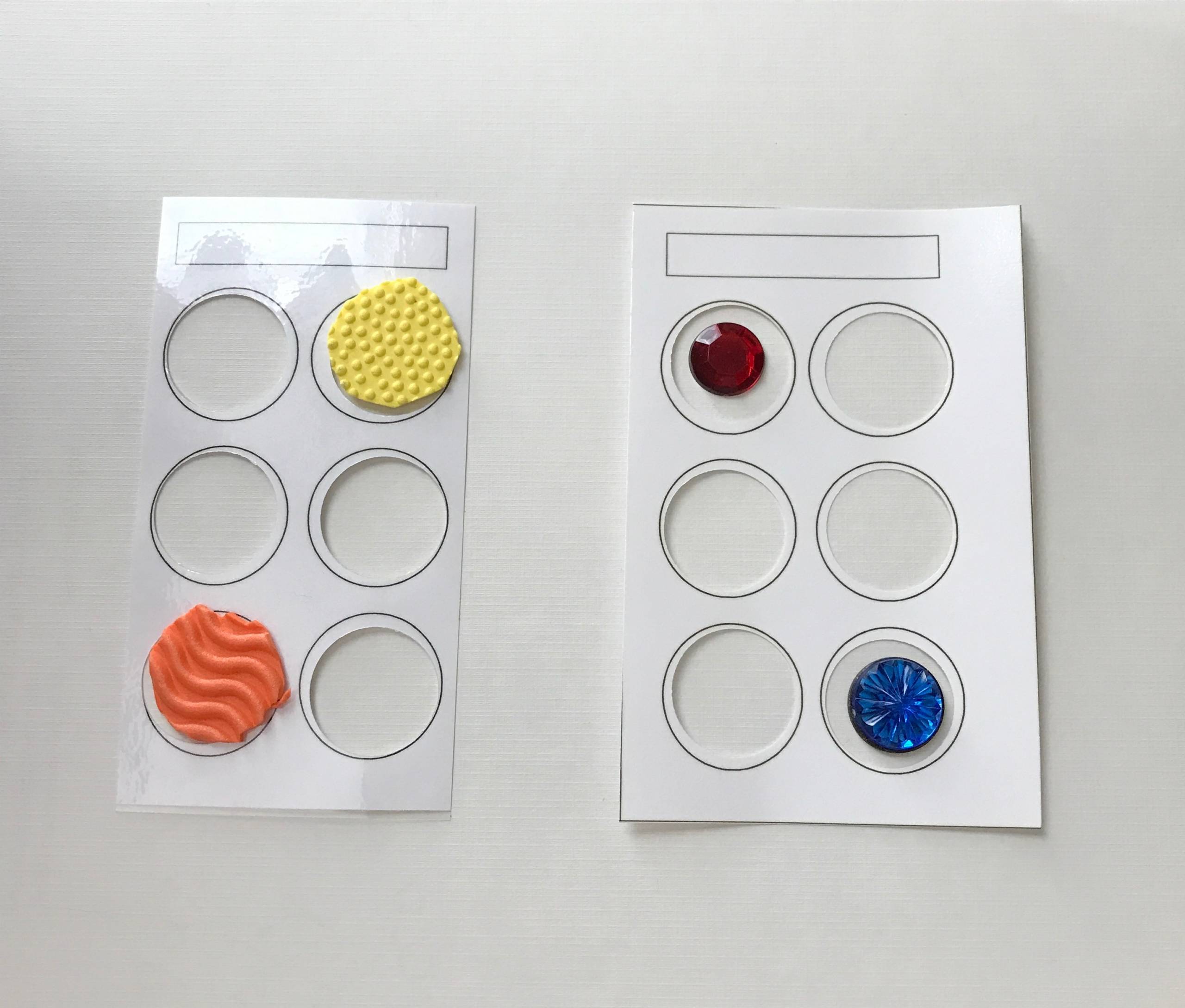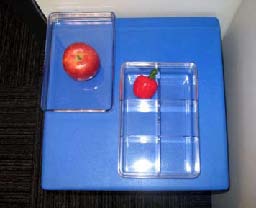So does your latest student have you scratching your head? What? You mean my student who reads braille might be having the same trouble their sighted peers with dyslexia have? Uh oh. Yep. Braille is full of them. For every letter, there’s a reversal. Heaven help us when they get flipped top to bottom! So here are some of my ideas I’ve developed over the years.
Materials
- magnet or velcro letters
- magnet or velcro dots with braille template
- swing cell
- peg slate
If you want some specific worksheet-style practice and sentence ideas, check out Beginning Braille Supplemental Program available from Exceptional Teaching Inc. Level E is entirely dedicated to confusers.
Confuser Remediation Ideas
- Use peg slate to make and compare.
- Make a list of student’s confusers on labeling paper and put on student’s desk for reference. DFHJ can go on corresponding corners of the desk.
- Make magnet circles and practice shapes/dot numbers.
- If student is able to get started in reading, context helps tremendously. “Which one makes sense?” For example: “The dog can go.” Or “As dog can go.”
- Practice letters independently. Push ones known to bottom of magnet board, incorrect ones to the top. Have student re-read all the confusers each time they add one to the top.
- Make shapes with cardboard or other item. Put dots where braille dots are.
- Use swing cell.
- Use peg slate. Write a whole line for them of the pair; in order and out of order. Have student read.
- Most letters are “open” on the left side (1 3). The contractions are “open” on the right side (4 6).
- Use circle magnets and have students make the pairs.
Specific Pair Suggestions
- If they are missing the bottom (e.g. O and E, G and Q), be sure their finger is maintaining full touch. Ask if there are any dots on the bottom.
- D f h and j are the 4 corners of a box ┌ ┐f d └ ┘ h j.
Cut out corners. Put dots at corners.
- H and j are “sitters.”
Compare to chair placed sideways left and right.
Make “L”s with hands. Left hand is “h” the right hand is “j”
Full body: have 2 friends sit with legs extended against a wall or something solid. The one on the left side of the wall is “h”. The one on the right side of the wall is “j”. They could take turns saying “Hi (h person) Jen/John (j person)
- D and f are “standers.”
Make with angling hand palm and fingers perpendicular.
Left hand is f, right hand is d.
Full body: stand up, put left side against desk, bend at waist and point head to right of desk for “f”. For “d” put right side of body against desk, bend at waist and point head to left of desk.
- E and I angle back and forwards /
Angle hands up. Left hand is I, right hand is E.
I points to the sky. E points to the earth
- U and M
Is the extra dot on top or bottom?
“c” shape on top or bottom?
- st and ch make a roof /. Ch is lazy and leans back. St is “pushy” and pushes forward.
- r points right, w points west
- Use word pairs or sentences: p th: people think,
m sh I like mashed potatoes,
s wh so which is it?,
u ing “u” like to sing,
gh ar ghosts don’t go around in cars!
Variations
The various activities could be used for students with low or no vision and at any age or skill level.




